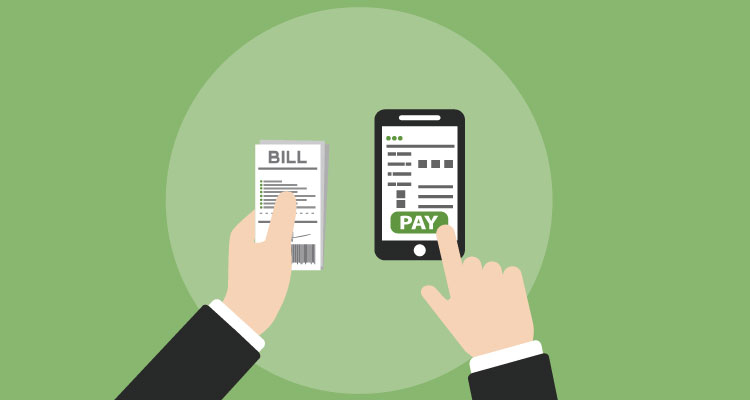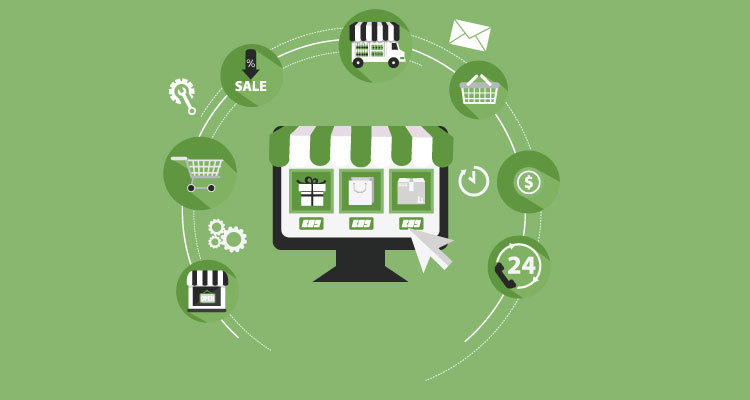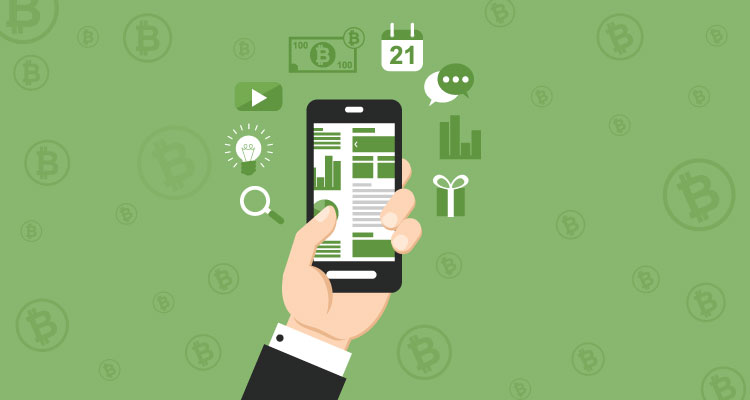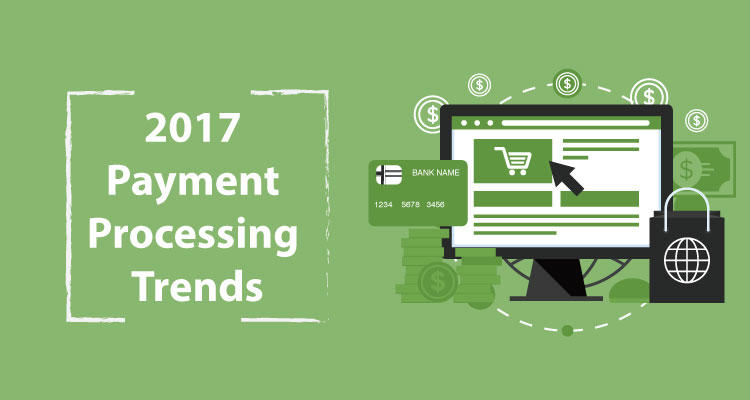Make no mistake about it. We’re rapidly approaching a cashless world where there multiple payment options such as eChecks and eCash, that are convenient and fast. The world of payment processing is changing so quickly, it’s best to be prepared by knowing about the payment processing trends, the options, and what lies ahead in 2017 and beyond.

Table of Contents
ToggleMobile Wallet usage will continue to grow.
Mobile wallets have patiently been waiting to take-off since Apple Pay entered the scene in 2015. Even though there have been a number of competitors, Google Wallet, Samsung Pay, Walmart, and Due, mobile wallets haven’t disrupted the payment industry as initially thought.
That is about to change in 2017.
According to Business Insider, between 2015-2020, mobile payment volume is expected to rise by a compound annual growth rate (CAGR) of 80 percent, which would bring mobile payments volume to $503 billion by 2020. Business Insider also forecasts the number of in-store mobile payment users to rise at a 40 percent, five-year CAGR, to reach 150 million by the end of 2020. This growth would represent 56 percent of the consumer population during that year.
mPOS adoption will also be on the rise.
Mobile point-of-sale (mPOS) devices, such as Square, were disruptive when they first debuted. The reason? They gave merchants an easy way to accept card payments no matter where they were. Since consumers now expect merchants to accept credit cards or debit cards, having mPOS terminals is a necessity.
ABI Research anticipates that there will be 51 million mPOS devices by 2019. That will make-up 46 percent of all POS systems.
“The mPOS market does present a substantial opportunity for not only the expansion of point of sale solutions by those vendors already active but also by new OTT players who could come into the payments space using mPOS as an entrance point,” says Phil Sealy, Senior analyst at ABI. “There has been much said about the cannibalization of the traditional POS market, but ABI Research believes that both traditional POS and mPOS can grow together in tandem, co-existing, expanding the presence of digital payment acceptance.
There will always be a need for traditional POS solutions driven by large fixed lane checkout applications. However, there will equally be merchants looking at simpler cost-effective solutions with added value services.”

The on-demand economy.
“Just as Amazon Prime has become a household name, in 2017 we will start to see a new level of demand take over the retail and hospitality industries,” says Scott Blum, VP at Total Merchant Services. “No longer content to wait two days for a package, consumers want their purchases within a few hours.” While this “on-demand” economy is prevalent with major retailers, mobile wallet and related technology will help it grow rapidly in 2017.
“From using your smartphone to make an ‘order ahead’ purchase online, to location tracking that will notify a store when you’ve arrived for pickup; the process will be free of plugging in a credit card and waiting in long lines to make your purchase,” says Plum. “In 2017, the on-demand approach will drive growth among small business merchants looking to take advantage of this trend.”

The Beginning of the Bitcoin Era
2016 was an excellent year for bitcoin. Last January bitcoins were valued at $350 and they are now above $900. While that value is expected to hold for investors, that’s not the reason why bitcoin, and the blockchain technology it runs on, will finally have a breakout year in 2017.
Traditional banks and financial institutions are beginning to adopt this technology and invest in it. People are beginning to see the value that the blockchain provides with smart contracts, cloud storage, and security. Global events happening in Nigeria, Venezuela, India, and even western countries “indicate that people are losing faith in the ‘mainstream’ financial system. In fact, it is the continuation of this madness in 2017 that will lead to cryptocurrencies assuming an increasing significance.”
Machine learning will be used to fight fraud.
Simply put, “machine learning is telling a computer how to solve a problem or what to do under certain circumstances.” While we see machine learning everyday, think of all those artificial chatbots that handle customer service inquires or make Netflix recommendations, we can expect this technology to be used to mitigate fraud, as well.
Sandra Wrobel-Konier, Content Marketing Manager at SecurionPay, explains that machine learning can detect any suspicious activity by using “historical and live data to create patterns for customers’ behavior. These patterns allow the system to make accurate fraud predictions.”
“Advanced algorithms evaluate every transaction for fraud risk and take appropriate action. The system creates deep profiles based on gathered data and analyses it to make the most accurate predictions and prevent fraud attempts,” says Wrobel-Konier.
While not perfect, machine learning is especially useful for “multi- channel payments when your customers pay on your website and via mobile devices” and “large e-commerce businesses when speed and scale are paramount.”

Fingerprint scanning is just the beginning with biometrics.
“Apple Pay already uses biometric scanning technology that allows consumers to use their fingerprints to unlock their phones and approve purchases — but again, why use a mobile device at all?,” asks BluePay. “A fingerprint scanner at the cash register could verify, process and approve transactions in the future — without requiring any type of wearable technology.”
While using your finger to process a payment would represent the ultimate in “digital” transactions, it’s only the beginning. The payment industry “could soon begin using iris scans, voice-recognition and even DNA verification. There really is no limit to how far biometric payment technology can go.”
More access to APIs.
“Compelling customer experiences, market competition, legislation and regulation for payments interoperability all trigger Open Banking and application programming interface (API) discussions,” writes Jeremy Light, Managing Director, Accenture Payment Service. “As the payment markets of tomorrow are being built today, access to open APIs must be a service provided by banks. APIs are a part of the technologies that drive new ways to interact with customers, efficiency, greater speed and more traceability.”
Light adds, “They hold real potential for banks to cut their costs and amplify the value of their services. For more on APIs, read: “Driving Innovation in Payments – Powered by APIs and Open Banking.”
Real-time payments will become a reality.
It’s no secret that the payment industry is heading towards “ubiquitous, real-time payments — both domestically and, in time, cross-border — through real-time interoperability of payments clearing platforms.”
For this to occur in 2017, the financial industry and businesses that accept global payments will have to embrace standards, innovation, and comply to regulations. Thankfully, the RegTech revolution is in full-swing and can help make this a reality.

Customers want subscription-based models and rewards.
Subscription-based models by companies like Dollar Shave Club and Rent The Runway, will continue to be popular. This model is convenient, flexible, and guarantees cash flow since payments recur every month.
Additionally, customers are also looking for an increase in reward programs. If you want to keep your customers happy, you’re going to have to send out coupons, deals, and promotions.
If you want to know how it’s done, learn from retailers like Starbucks, CVS, A.C. Moore, Ace Hardware, and Office Depot.
Tighter regulations.
While browsing Quora, I found this answer regarding the key trends in payments industry for 2017, from Bozo Juretic, Co-founder of PencePay.com:
Very heavy regulation, with the excuse of “stopping terrorism,” “anti-money laundering,” and so on. I have experienced this with with several partners we work with this year (increase in the KYC burden for their clients), and it will increase in the following year as well.
So, if you needed to provide 3 documents for CDD/KYC to access some financial service before, you will now need to give 5. And then they will need to be certified and translated.
On top of that, I expect more attempts to prevent tax evasion, more specifically crackdown on the remaining offshore locations.
Also, we will see unprecedented crackdown of card companies on their merchants regarding the location of the incorporation country, relative to the acquiring (payment processing) bank the merchant is using.
This will now be much more tightly controlled, i.e. you will be able to use only the bank in your region, and “tricks” from the past like opening an EU company to in reality process payments of a U.S. or Asian parent company will not work anymore. There are various reasons for this that we can speculate on, by my guess is that the U.S. wants to move back on-shore all the money it possibly can (which includes sucking up various off-shore locations and moving that money to Delaware and such), in preparation for the big financial collapse of some sort.
So basically all around the world, but much more in the Western world, overregulation will be the theme of 2017.
What payment processing trends are you expecting to take place in the upcoming year?















